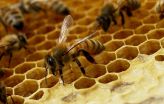(Press-News.org) Don't look now, but the pronoun "I" is becoming obsolete.
Recent microbiological research has shown that thinking of plants and animals, including humans, as autonomous individuals is a serious over-simplification.
A series of groundbreaking studies have revealed that what we have always thought of as individuals are actually "biomolecular networks" that consist of visible hosts plus millions of invisible microbes that have a significant effect on how the host develops, the diseases it catches, how it behaves and possibly even its social interactions.
"It's a case of the whole being greater than the sum of its parts," said Seth Bordenstein, associate professor of biological sciences at Vanderbilt University, who has contributed to the body of scientific knowledge that is pointing to the conclusion that symbiotic microbes play a fundamental role in virtually all aspects of plant and animal biology, including the origin of new species.
In this case, the parts are the host and its genome plus the thousands of different species of bacteria living in or on the host, along with all their genomes, collectively known as the microbiome. (The host is something like the tip of the iceberg while the bacteria are like the part of the iceberg that is underwater: Nine out of every 10 cells in plant and animal bodies are bacterial. But bacterial cells are so much smaller than host cells that they have generally gone unnoticed.)
Microbiologists have coined new terms for these collective entities - holobiont - and for their genomes - hologenome. "These terms are needed to define the assemblage of organisms that makes up the so-called individual," said Bordenstein.
In the article Host Biology in Light of the Microbiome: Ten Principles of Holobionts and Hologenomes published online Aug. 18 in the open access journal PLOS Biology, Bordenstein and his colleague Kevin Theis from the University of Michigan take the general concepts involved in this new paradigm and break them down into underlying principles that apply to the entire field of biology.
They make specific and refutable predictions based on these principles and call for other biologists to test them theoretically and experimentally.
"One of the basic expectations from this conceptual framework is that animal and plant experiments that do not account for what is happening at the microbiological level will be incomplete and, in some cases, will be misleading as well," said Bordenstein.
The first principle they advance is that holobionts and hologenomes are fundamental units of biological organization.
Another is that evolutionary forces such as natural selection and drift may act on the hologenome not just on the genome. So mutations in the microbiome that affect the fitness of a holobiont are just as important as mutations in the host's genome. However, they argue that this does not change the basic rules of evolution but simply upgrades the types of biological units that the rules may act upon.
Although it does not change the basic rules of evolution, holobionts do have a way to respond to environmental challenges that is not available to individual organisms: They can alter the composition of their bacterial communities. For example, if a holobiont is attacked by a pathogen that the host cannot defend against, another symbiont may fulfill the job by manufacturing a toxin that can kill the invader. In this light, the microbes are as much part of the holobiont immune system as the host immune genes themselves.
According to Bordenstein, these ideas are gaining acceptance in the microbiology community. At the American Society of Microbiology General Meeting in June, he convened the inaugural session on "Holobionts and Their Hologenomes" and ASM's flagship journal mBio plans to publish a special issue on the topic in the coming year.
However, adoption of these ideas has been slower in other fields.
"Currently, the field of biology has reached an inflection point. The silos of microbiology, zoology and botany are breaking down and we hope that this framework will help further unify these fields," said Bordenstein.
Not only will this powerful holistic approach affect the basic biological sciences but it also is likely to impact the practice of personalized medicine as well, Bordenstein said.
Take the missing heritability problem, for example. Although genome-wide studies have provided valuable insights into the genetic basis of a number of simple diseases, they have only found a small portion of the genetic causes of a number of more complex conditions such as autoimmune and metabolic diseases.
These may in part be "missing" because the genetic factors that cause them are in the microbiome, he pointed out.
"Instead of being so 'germophobic,' we need to accept the fact that we live in and benefit from a microbial world. We are as much an environment for microbes as microbes are for us," said Bordenstein.
INFORMATION:
The research was supported by National Science Foundation grants DEB 1046149, IOS 1456778, IOS 0920505 and DBI 0939454.
Visit Research News @ Vanderbilt for more research news from Vanderbilt.
A longstanding mystery about the tiny stars that let loose powerful explosions known as Type Ia supernovae might finally be solved.
For decades, astronomers have debated whether one white dwarf star, or two, is necessary for firing up this particular kind of supernova. The answer is not merely academic. Understanding the nitty-gritty physics and diversity of Type Ia supernovae will help illuminate our study of the evolution of galaxies and the strange cosmic force known as dark energy.
"It's about understanding one of the ultimate mysteries about stars," Laura Chomiuk, ...
In a paper titled Hummingbird tongues are elastic micropumps which appears in the August 19 issue of Proceedings of the Royal Society B, Alejandro Rico Guevara and Margaret Rubega from the Department of Ecology and Evolutionary Biology and Tai-Hsi Fan from the School of Engineering, say that fluid is actually drawn into the tongue by the elastic expansion of the tongues grooves after they are squeezed flat by the beak.
Their data shows that fifty years of research describing how hummingbirds and floral nectar have coevolved will have to be reconsidered.
What is actually ...
Researchers from North Carolina State University have developed an efficient algorithm that can interpret the wheezing of patients with breathing difficulties to give medical providers information about what's happening in the lungs. The research is part of a larger, ongoing project to develop wearable smart medical sensors for monitoring, collecting and interpreting personal health data.
The work was done by Saba Emrani and Hamid Krim, researchers in the National Science Foundation Nanosystems Engineering Research Center for Advanced Self-Powered Systems of Integrated ...
CHICAGO --- Polycystic ovary syndrome (PCOS) has been passed down in many families for generations -- causing reproductive and metabolic health problems for millions of women around the world. Yet, its cause remains unknown despite more than 80 years of research since the disorder was first described in 1935.
A new Northwestern Medicine genome-wide association study of PCOS -- the first of its kind to focus on women of European ancestry -- has provided important new insights into the underlying biology of the disorder.
Using the DNA of thousands of women and genotyping ...
LAWRENCE -- Compulsory schooling laws instituted in the late 1800s and early 1900s caused more people in Northern states to marry people at their same education level and race, possibly contributing to economic inequality, according to a University of Kansas researcher's study.
Emily Rauscher, a KU assistant professor of Sociology, found no increase in assortative mating in Southern states as a result of the laws, suggesting the influence of educational expansion on marital sorting depends on context.
"It's difficult to know why the compulsory laws had different effects ...
Solo travellers don't go alone because they have to, they do it because they want to, a new Queensland University of Technology study has found.
Professor Constanza (Connie) Bianchi, from QUT Business School, said there were a growing number of people who preferred to travel alone, despite having family and friends.
She said solo travellers were choosing freedom, uncompromised fun and meeting new people over the desire to have a companion to share their experiences.
In a study published in the International Journal of Tourism Research, Professor Bianchi looked at ...
This news release is available in Japanese.
An international research team has some good news for the struggling honeybee, and the millions of people who depend on them to pollinate crops and other plants.
These valuable pollinators have faced widespread colony losses over the past decade, largely due to the spread of a predatory mite called Varroa destructor. But the bees might not be in as dire a state as it seems, according to research recently published in Nature Communications.
Researchers found a population of wild bees from around Ithaca, New York, which ...
Current international disease surveillance systems are mainly based on reports made by doctors after treatment of infected patients. As a consequence, disease-causing microorganisms and resistance bacteria have time to spread and make large population groups sick before they are detected.
There is currently only very limited information about the global occurrence and transfer of antimicrobial resistance and infectious diseases.
Researchers at the National Food Institute and DTU Systems Biology are working to develop faster methods to detect and respond to outbreaks ...
Scientists at VIB and KU Leuven have shown that blocking the PHD1 oxygen sensor hinders the activation of p53, a transcription factor that aids colorectal cancer (CRC) cells in repairing themselves and thus resisting chemotherapy. Chemotherapy resistance remains a major clinical issue in the treatment of CRC. These findings indicate that PHD1 inhibition may have valuable therapeutic potential. The study was published in the leading medical journal EMBO Molecular Medicine, which features molecular biology-driven research.
Chemotherapy remains the most widely used cancer ...
Safinamide (trade name: Xadago) has been available since February 2015 as add-on therapy for the treatment of mid- to late-stage Parkinson disease in adults. In combination with levodopa alone or together with other Parkinson disease medicinal products, this monoamine oxidase (MAO-B) inhibitor is used to help restore dopamine levels in the brain. The German Institute for Quality and Efficiency in Health Care (IQWiG) examined in a dossier assessment whether this drug offers an added benefit over the appropriate comparator therapy.
Such an added benefit cannot be derived ...

